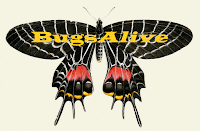Jamides celeno
DATASHEET
Common Name:
Taxonomy:
Morphology:
Sexual Dimorphism:
Distribution:
Flight time:
Habitat:
Life History:
Voltinism:
Larval hosts:
(all locations)
Adult food sources:
(all locations)
Photos:
(Click to view large)
the Common Caerulean Photos at the bottom of the page
Arthropoda - Insecta - Lepidoptera - Lycaenidae - Polyommatinae - Jamides - celeno (Cramer, 1775)
wingspan - 23-30mm, wing colour - UP blue with dark border on forewings (male) broader dark border and submarginal markings on hindwing (female); UN varying shades of brown with darker bands and two orange-bordered eyespots at back of rear wing, eye colour - black, proboscis colour - dark yellow, antennae colour - black/white banded, abdomen colour - grey, leg colour - white/black striped
differences in appearance on upper wings
Sri Lanka, India, Nepal, Bhutan, Bangladesh, Myanmar, Thailand, Laos, Cambodia, Vietnam, China, Taiwan, Malaysia, Singapore, Indonesia, Philippines
all year depending on location
deciduous and evergreen forest, grassland, scrubland, agricultural lands, and urban area
egg 2-3 days ¦¦ instar1 2-3 days ¦¦ instar2 2 days ¦¦ instar3 3-4 days ¦¦ instar4 7-8 days ¦¦
¦¦ instar5 n/a ¦¦ pupa 6 days ¦¦ Total egg-adult 22-26 days. All times approximate.
multivoltine
Abrus precatorius, Abrus pulchellus, Atylosia albicans, Butea frondosa, Butea monosperma, Cajanus albicans, Cajanus cajan, Canavalia gladiata, Crotalaria sp., Dolichos rhombifolius, Entada rheedei, Flemingia macrophylla, Lablab purpureus, Millettia pinnata, Mucuna pruriens, Phaseolus adenanthus, Phaseolus vulgaris, Pongamia glabra, Pueraria phaseoloides, Saraca asoca, Saraca thaipingensis, Vigna hosei, Vigna luteola, Vigna radiata, Vigna reflexopilosa, Vigna unguiculata, Xylia xylocarpa (Fabaceae), Elettaria cardamomum (Zingiberaceae), Heynea trijuga, Trichilia hirta, Trichilia trijuga (Meliaceae), Combretum sundaicum (Combretaceae), Donax canniformis (Marantaceae), Theobroma cacao (Malvaceae), Euodia meliaefolia (Rutaceae)
Actual host plant used depends upon location and availabilty of plant species.
Nectar: Elephantopus scaber, Spilanthes paniculata, Tridax procumbens (Asteraceae), Orthosiphon aristatus (Lamiaceae), Oxalis barrelieri (Oxalidaceae), Pueraria phaseoloides, Tephrosia purpurea (Fabaceae), Celosia argentea (Amaranthaceae), Zizyphus mauritiana (Rhamnaceae), Antigonon leptopus (Polygonaceae), Jatropa gossypifolia (Euphorbiaceae)
Other: mud puddling, animal dung, rotting fruit (especially mango)






